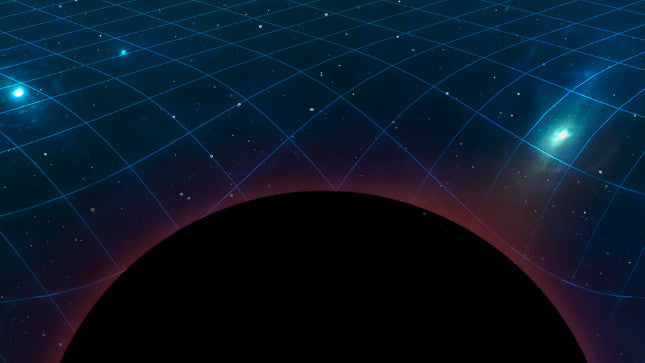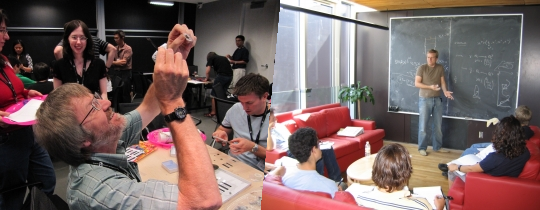
Revolutions in Science
New Download Options:
-
With Video includes related videos
(30 MB, MOV files) - With YouTube Video link includes a link to the same videos on YouTube
This resource introduces three of the most revolutionary models in science: general relativity, quantum physics, and special relativity. Students learn about the observations that led to the development of these models. Next, they explore simple demonstrations and hands-on activities that show how the new models explain the observations.
Scientific Models: Gravity and Scientific Revolution: General Relativity

Students consider a rod with weights at both ends. They’re introduced to the idea that acceleration can also explain any other gravitational phenomena. Finally, students learn about Einstein’s model of gravity, general relativity.

Students use a beach ball and painters’ tape to see how general relativity explains freefall motion.
Scientific Models: The Atom and Scientific Revolution: Quantum Mechanics

Students think about the classical planetary model of the atom. They’re guided to realize that it incorrectly predicts that atoms are unstable and rapidly collapse due to electrons spiralling into the nucleus.

Students use a slinky to explore stationary waves. They learn about the properties of stationary waves and how quantum physics uses them to build a model of the atom that is stable.
Scientific Models: Time and Special Relativity

Using a series of thought experiments, students explore the concepts of absolute time and the principle of relativity. They learn that these two ideas are incompatible. They explore other thought experiments that lead them to the concept of time dilation in special relativity.

Students are guided through a series of thought experiments that lead to the concept of mass-energy equivalence and Einstein’s famous equation E = mc2.










